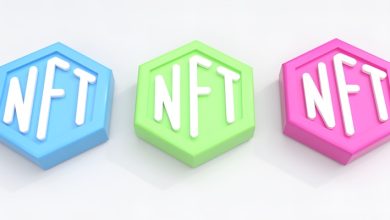Solana’s Innovations: Is It the Ethereum Killer?

- Understanding Solana’s key innovations in blockchain technology
- Comparing Solana’s speed and scalability with Ethereum’s limitations
- Examining Solana’s potential to challenge Ethereum’s dominance in the market
- Exploring the decentralized applications built on Solana and their impact
- Analyzing the community response to Solana as a potential Ethereum competitor
- Predicting the future of blockchain technology with Solana’s advancements
Understanding Solana’s key innovations in blockchain technology
Solana’s key innovations in blockchain technology have positioned it as a formidable competitor to Ethereum in the cryptocurrency space. One of Solana’s standout features is its high throughput capacity, which allows for quick transaction processing and scalability. This is made possible through Solana’s unique consensus mechanism called Proof of History, which timestamps transactions before they are executed. This innovative approach eliminates the need for time-consuming confirmations, enabling Solana to achieve industry-leading transaction speeds.
Another key innovation of Solana is its low transaction fees, which make it an attractive option for users looking to avoid high fees associated with other blockchain networks. By utilizing a combination of Proof of Stake and Proof of History, Solana is able to keep transaction costs down while still maintaining a high level of security and decentralization.
Additionally, Solana’s architecture is designed to be highly efficient, utilizing a system of parallel processing that allows multiple transactions to be processed simultaneously. This not only speeds up transaction times but also reduces the strain on the network, making Solana more energy-efficient than some of its competitors.
Overall, Solana’s key innovations in blockchain technology set it apart as a promising alternative to Ethereum. With its high throughput capacity, low transaction fees, and efficient architecture, Solana has the potential to disrupt the cryptocurrency market and establish itself as a leading blockchain platform for the future.
Comparing Solana’s speed and scalability with Ethereum’s limitations
Solana’s speed and scalability set it apart from Ethereum’s limitations in significant ways. Solana has been designed to process transactions at lightning speed, with a throughput of over 65,000 transactions per second. This is in stark contrast to Ethereum, which struggles with network congestion and high fees during times of high demand.
Furthermore, Solana’s architecture allows for horizontal scaling, meaning that as the network grows, it can easily handle an increase in transaction volume without compromising on speed. Ethereum, on the other hand, is currently grappling with scalability issues, leading to delays and higher costs for users.
When comparing Solana’s speed and scalability with Ethereum’s limitations, it becomes clear that Solana has the potential to become a serious contender in the blockchain space. Its innovative approach to solving the scalability problem could make it a more attractive option for developers and users looking for a fast and efficient blockchain platform.
Examining Solana’s potential to challenge Ethereum’s dominance in the market
Solana’s rise in the cryptocurrency market has sparked discussions about its potential to challenge Ethereum’s dominance. As a blockchain platform that boasts high-speed transactions and low fees, Solana offers a compelling alternative to Ethereum’s scalability issues. With its innovative approach to consensus mechanisms and smart contract execution, Solana has caught the eye of many investors and developers.
While Ethereum remains the leading platform for decentralized applications and DeFi projects, Solana’s rapid growth and technological advancements cannot be ignored. The Solana ecosystem is expanding rapidly, with a growing number of projects and developers choosing to build on its platform. This increased adoption is a clear indication of Solana’s potential to disrupt Ethereum’s market dominance.
One of the key advantages that Solana has over Ethereum is its ability to process thousands of transactions per second, thanks to its unique architecture and innovative technologies. This high throughput makes Solana an attractive option for developers looking to create scalable and efficient decentralized applications. Additionally, Solana’s low transaction fees make it a more cost-effective option for users compared to Ethereum’s often high gas fees.
However, it is important to note that Ethereum still holds a significant market share and has a well-established network of users and developers. While Solana’s technological innovations are impressive, it will take time for it to catch up to Ethereum in terms of adoption and overall market dominance. Nevertheless, Solana’s potential to challenge Ethereum’s position as the top blockchain platform is undeniable, and it will be interesting to see how this competition plays out in the coming years.
Exploring the decentralized applications built on Solana and their impact
Solana’s ecosystem is rapidly expanding with a wide range of decentralized applications (dApps) being built on its blockchain network. These dApps cover various sectors such as finance, gaming, NFTs, and more. Let’s explore some of the most impactful decentralized applications on Solana:
- Raydium: A decentralized exchange (DEX) on Solana, offering low fees and high transaction speeds for users to trade various cryptocurrencies.
- Star Atlas: A futuristic gaming platform that leverages Solana’s fast transaction times to create a seamless gaming experience for users.
- Mercurial Finance: A decentralized money market protocol enabling users to lend, borrow, and earn interest on their crypto assets.
- Step Finance: A dashboard that provides real-time analytics and insights for users to manage their DeFi portfolios efficiently.
These decentralized applications showcase the scalability and efficiency of Solana’s blockchain network, attracting developers and users alike. As more dApps are being built on Solana, its potential as a competitor to Ethereum becomes increasingly evident.
Analyzing the community response to Solana as a potential Ethereum competitor
The community response to Solana as a potential competitor to Ethereum has been mixed. Some members of the cryptocurrency community are excited about Solana’s innovations and scalability solutions, seeing it as a promising platform that could challenge Ethereum’s dominance in the decentralized finance space. On the other hand, there are also skeptics who question whether Solana can truly compete with Ethereum’s network effects and developer ecosystem.
Many supporters of Solana point to its high throughput and low transaction fees as key advantages over Ethereum. Solana’s innovative Proof of History consensus mechanism and its ability to handle thousands of transactions per second have impressed many observers. These features could make Solana an attractive option for developers looking to build decentralized applications that require high performance and scalability.
However, critics of Solana argue that Ethereum’s first-mover advantage and established network of developers give it a significant edge over newer competitors like Solana. Ethereum’s robust ecosystem of decentralized applications and smart contracts has made it the go-to platform for many projects in the DeFi space. Some skeptics question whether Solana can attract the same level of developer interest and community support as Ethereum.
Overall, the community response to Solana as a potential Ethereum competitor reflects the ongoing debate within the cryptocurrency community about the future of decentralized finance. While some see Solana’s innovations as a game-changer that could disrupt Ethereum’s dominance, others remain cautious about whether Solana can truly challenge Ethereum’s position as the leading platform for decentralized applications. Only time will tell how Solana’s technology and ecosystem will evolve and whether it can truly become the “Ethereum killer” that some envision.
Predicting the future of blockchain technology with Solana’s advancements
The rapid advancements in Solana’s blockchain technology have sparked discussions about its potential to challenge Ethereum’s dominance in the cryptocurrency space. With its high throughput and low transaction costs, Solana is positioning itself as a strong contender in the race to become the go-to platform for decentralized applications (dApps) and smart contracts.
One of the key innovations that Solana brings to the table is its unique consensus mechanism, Proof of History. This mechanism allows the network to process transactions in parallel, significantly increasing its scalability compared to other blockchains. As a result, Solana can handle thousands of transactions per second, making it an attractive option for developers looking to build high-performance dApps.
Moreover, Solana’s support for the Ethereum Virtual Machine (EVM) means that developers can easily port their existing Ethereum projects to the Solana network. This interoperability with Ethereum opens up a wide range of possibilities for cross-chain collaboration and innovation, potentially bridging the gap between different blockchain ecosystems.
Looking ahead, the future of blockchain technology with Solana’s advancements seems promising. As more developers and projects migrate to Solana, we can expect to see a flourishing ecosystem of dApps and smart contracts that leverage its speed and scalability. While it’s too early to tell whether Solana will emerge as the “Ethereum killer,” it’s clear that the platform is making significant strides towards becoming a major player in the blockchain space.



